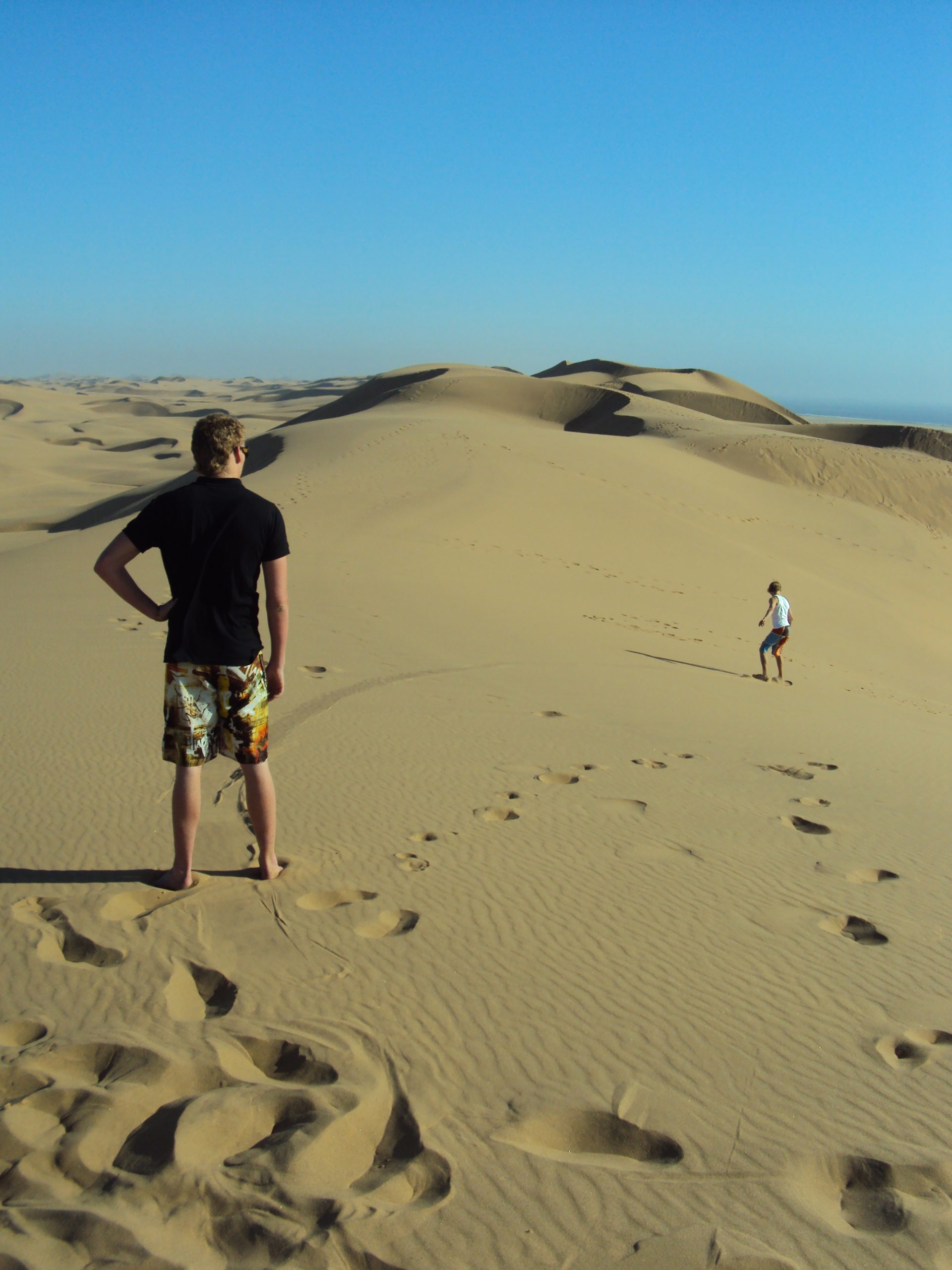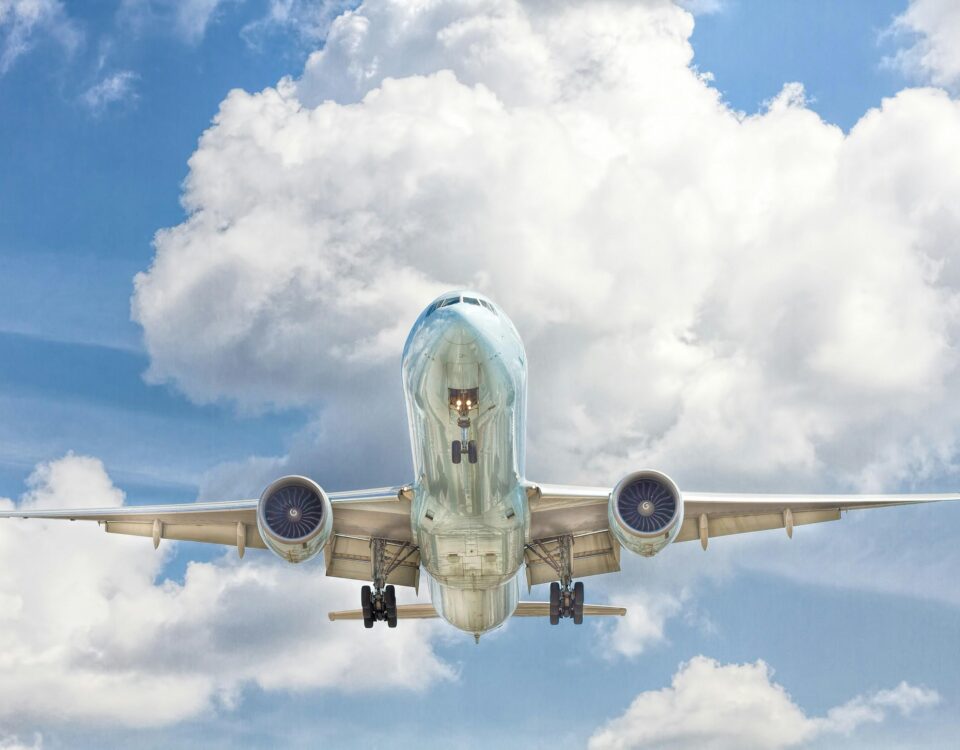
The ghost town of Kolmanskop – diamonds, champagne and sand
January 6, 2017
Road hogs
January 11, 2017Text Marita van Rooyen | Main Photo Paul van Schalkwyk
WHEN WHIZZING DOWNHILL AT 80 KILOMETERS AN HOUR STRAPPED TO A PLANK, IT’S BEST TO KEEP YOUR MOUTH SHUT. THE ALTERNATIVE, IF YOU FALL, IS GRINDING PASTE IN YOUR INTESTINES FOR THE NEXT WEEK.
T he dunes of Swakopmund on Namibia’s Atlantic coastline are a sandboarder’s ultimate fantasy. The crests and curves rising as high as 300 metres in the oldest desert on earth hold a fascination that seems to call you to the dunes, whether you have any intention of sliding down them or not.
Supermassive sand heaps
Dating back at least 55 million years and occupying an area of around 80 900 km2, the Namib stretches northwards along the country’s entire 1 500-kilometre coastline from the Orange River mouth all the way north into south-western Angola. And even if you’re not one of those souls who become excited over a seemingly endless sandpit, you might very well change your mind once you take your first gulp of fresh air and focus on the spectacular landscapes.
Namibia’s indigenous Nama population didn’t call the desert ‘vast’ in their language for nothing. With every inhalation, you breathe in the pure goodness of unpolluted air, a substance that will easily get you high on life and cause you to become addicted to the Namib and what it has to offer. This is no joke. It happens to many who venture naively into this inhospitable enormity.
Tales of newfound wisdom aside, the Namib Desert also hosts some of the highest masses of sand on our planet—the setting for one of the most rewarding and, strangely enough, least mentioned adventure sports out there: sandboarding.
Riding the dunes
Josh Tenge, professional sand boarder with three Guinness World Records behind his name, describes the thrill of riding the dunes as being awesome. It’s a sport he likens to whizzing down a ski slope and running along the beach at the same time. It’s also a great spectator sport, as we humans are not ashamed to marvel in the pain and misery of others, which in this case would be claiming a load of sand.
In Namibia, sandboarding slowly came to life after pioneer Derek Bredenkamp ventured down a dune on his plank in 1974. After many years of attracting only local daredevils, the activity finally became a commercialised sport in 1996. Buffered by the predominantly south-west winds, the slopes and slip faces of the sandbanks around the coastal towns of Swakopmund and Walvis Bay have become the most popular amongst adrenaline-hungry boarders. With an altitude of up to 120 metres, these dunes have the perfect angle for lie-down or stand-up boarding. And make no mistake, even though face-down boarding is quite different to the stand-up version, you can still reach the same speeds: a blood-pumping 80 kilometres an hour. A smoothly polished board is used for this style, perfect to make you travel down the grainy dune slipfaces with a soft ‘swoooosh’. And please take the instructor’s advice: keep your mouth closed at all times!
Do it like a dune mole
And then, of course, there’s the other way to move, in my biased opinion: make a headlong dash down the dune like a severely disorientated golden mole.
As with snowboarding, your most valuable companion will be the board, which should be relatively light for super fast gliding, with bindings to keep the feet securely attached to it. Sand boarding boots will make the journey downhill more comfortable, but are not a necessity. Also, you might be riding the soft sands, but it’s still good to wear a helmet for extra protection. Unfortunately, as you have probably guessed, the helmet won’t help you at all when it comes to keeping the desert dust out of your ears and nose. Be warned, however: even though a dune surface is quite soft to the touch, its sandy base doesn’t make for a very comfortable landing pad.
Also called skateboarding without wheels, super-tubing without water, and, needless to say, snowboarding on sand, stand-up sandboarding does ask for some technique if you want to get the most out of it. Leaning forward will make you go ‘wooooo hooooo’, whereas leaning backwards will make you go ‘thud!’ followed by ‘damn’. Alternatively, just aim for the ground. It might not make for such a smooth landing, but your body will inevitably and eventually come to a halt. That’s the basics of it. The professionals, not surprisingly, tend to tackle the experience with rather more skill than we normal folks. Oh yes! Keep a lookout for the gravel plains at the bottom to avoid skin burns.
So what, if any, are the dangers of sandboarding? As with any extreme adrenaline sport, if you don’t listen and follow your sandboarding guide’s instructions but try crazy stunts of your own, there is a risk of hurting yourself, even if it’s just giving your ego a knock. The main danger is that you’ll become hooked and will want to come back for more. For first-time dune sliders, the best advice offered is this: don’t be stiff and don’t forget to have fun (as if this is not already a given). Some more suggestions, seeing as you’ll be spending quite a bit of time under the hostile rays of the desert sun: remember to bring your sunglasses, hat and, most importantly, the sunscreen. Do not forget the sunscreen.
Without a doubt, the space—and the feeling of utter freedom that comes with the package—is one of the key factors that make Namibia such an extraordinary country. So even if you are drawn to the spectacular masses without any intention of sandboarding down them, set your adventurous spirit free in this landscape that never fails to make an impact. Grab your guts, a pair of comfy shoes, and get ready to carve your name into the super massive sandbanks of the coastal sand seas of the Namib. This is what the locals call lekker!
www.culturalactivities-namibia.com
LOCAL SANDBOARDING LINGO
Swandy: A combination of sweaty and sandy, something you’ll inevitably be after a day in the dunes.
Lekker: An Afrikaans word used for all things good, in this case to describe the feeling of fulfilment you attain when you reach the bottom without buying any sand.
Chillaxing: The period between rides are usually spent ‘chillaxing’ on top of the dune, appreciating the view and watching others have fun.
Drag: A fast, reckless run to the bottom.
Carve: Slicing up the dunes by means of turning.
Face plant (also called buying sand): Falling face-first into the sand.

This article was first published in the Flamingo November 2010 issue.


